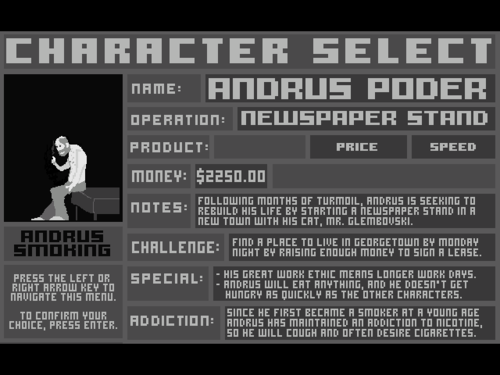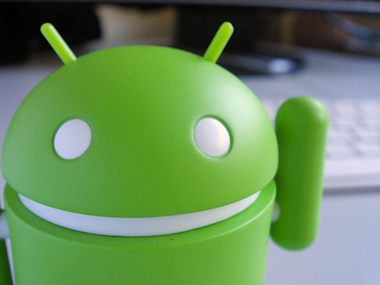
Featured Blog | This community-written post highlights the best of what the game industry has to offer. Read more like it on the Game Developer Blogs or learn how to Submit Your Own Blog Post
A Small Dev's Observations from GDC 2013
In this post, I highlight some exciting observations I made from GDC 2013 that bode well for small, design-focused game developers.

This is a repost from my blog, DevFromBelow, where I talk about game dev for the little guy.
While I try to update the blog once a week, I am a little late thanks to last weekend’s trip back from GDC in San Francisco and the following week of playing catch-up. This week marks a bit of a change of pace for me, as I’m going to publish some thoughts on the event instead of my typical dev or design essays.
Moreso than other years, this year’s GDC marked a major shift towards indie friendliness in the industry. On his Twitter feed after the show, Jesse Schell commented:
Goodbye, #GDC13 … Every time I smell corporate fear and unrealistic indie optimism, I’ll think of you.
Likewise, Kotaku’s Kirk Hamilton, in an article entitled “And Then the Video Game Industry Woke Up”, stated:
With each passing GDC, the indie presence has become more and more pronounced, but this year felt like something of a tipping point.
Indeed, indie energy was palpable everywhere from GDC Play to the expo floor. Here are a few promising observations:
Design > Technology
As both an indie developer and educator, I am always on the lookout for opportunities for my students to get their feet in the door of game development. Luckily, many of the more well-regarded talks this year focused on design discussions rather than graphical power.

Richard Hofmeier’s Cart Life took home a number of IGF awards, including the Seumus McNally Grand Prize. It strongly emphasizes narrative and simulates the difficulty of life as a retail shop owner through its mechanics.
Focusing on design over tools was a major anthem of the Education Summit, for example, with the Curriculum Deathmatch talk easily being one of the most insightful and entertaining events of the show. On the other hand, some of the group I attended the show with expressed disappointment with the AAA game talks, wishing that they had gone a bit deeper into design issues or challenges rather than giving sales pitches.
This year, the IGF and Rumpus Royale events also showcased a series of games that emphasized design and style over horsepower. 8-bit art was in full force here, with the majority of titles focusing on strong and innovative takes on gameplay, narrative, and presentation. Indie darling FTL even spilled into the broader industry-focused Game Developer’s Choice Awards with a nomination for the Innovation Award and a win in the Best Debut category.
Android, Android, Everywhere
GDC 2013 was an incredibly strong show for Android, as you could barely look in any direction without seeing a new gadget or peripheral that worked with the ubiquitous mobile OS. Android’s openness is definitely paying off in terms of allowing developers choices of how to launch software.

Because the Android mascot is awesome.
A major attention getter during the show was the MOGA, a bluetooth controller that connects to and docks Android phones to create a handheld mobile gaming device. It certainly helped that they were giving devices out freely to IGDA members. As of right now, it already boasts a beefy selection of Android games to play with, including Grand Theft Auto: Vice City and Sonic CD. These games are also bought through the Google Play store rather than a special shop (though a MOGA app helps you find compatible games), so users do not have to rebuy titles. I’m looking forward to experimenting with the SDK as a way of enhancing some upcoming projects.
Speaking of Android-compatible mobile game devices. I also got a hands-on demonstration with the NVIDIA Shield. After its announcement, I was cautiously optimistic about the platform, but now I am very excited about the opportunities it presents. Perhaps my favorite thing is that it will also run Google Play, so there are opportunities for developers to launch once and have their app cross-pollinate many devices. Likewise, NVIDIA is providing a full-featured development environment for the device on their website, so it’s yet another enticing opportunity for Android devs. Lastly, (and I realize this somewhat contradicts my previous excitement for a lack of focus on graphics) the screen on the Shield is REALLY pretty, so devs can create a good impression no matter what art style they choose.
The Microconsole Effect
Android had yet another broad effect that deserves its own section. For those who haven’t been paying attention, 2012 saw the introduction of the Microconsole, Android-based consoles that could hook up to televisions for more traditional gaming experiences. Microconsoles such as Ouya,Gamestick, and Greenthrottle - while not readily visible on the show floor - were making their presence felt through sudden shifts towards indie-friendly environments on major consoles.
Since announcing the Playstation 4, Sony’s rhetoric has been very supportive of indies. While there has not been many specifics from their camp on online developer accounts and the like for their consoles, they have announced a number of upcoming titles such as Hotline Miamiand Limbo.

What opportunities await in Nintendo’s new Web Framework?
Perhaps even more interesting is Nintendo’s new indie push. With this, they are offering two options for making games for the Wii U: Unity or their new Nintendo Web Framework. To become a Wii U developer, devs must fill out a questionnaire (found here) and show previous development experience. I myself have filled out the questionnaire so we shall see how the actual approval process goes. The Web Framework itself is interesting, allowing devs to use HTML 5 or Javascript to develop games. Again, I will continue to explore how the whole Framework fits into current projects. Hopefully this provides Nintendo with the kind of devs it needs to experiment with their new console’s unique control opportunities.
Conclusion
Overall, GDC 2013 proved an eye-opening experience that offered many new opportunities for small developers. It will be interesting to see how some of these new and upcoming frameworks do in the coming year. Will Microconsoles follow their success on crowdfunding sites with commercial success? Will Android-based devices and peripherals perform well? Will Nintendo attract indies with their new tools? What about Microsoft and their upcoming Xbox announcements? Will Windows Mobile rise as a mobile market? There are sure to be lots of exciting developments before GDC 2014.
About the Author(s)
You May Also Like







.jpeg?width=700&auto=webp&quality=80&disable=upscale)








